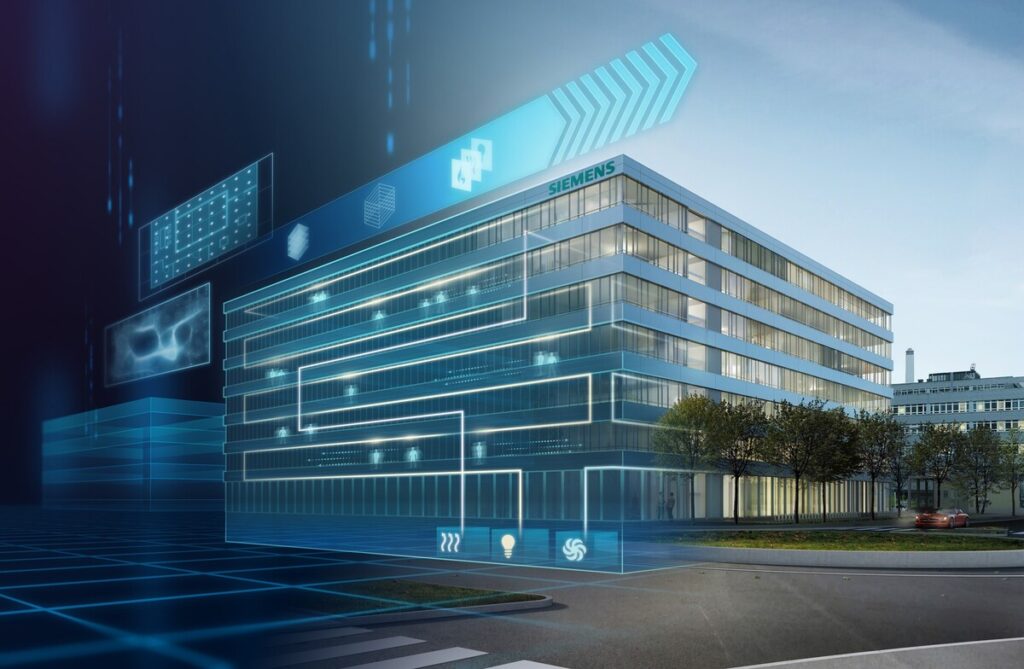Exclusive Neuroject Article: Digital Twin technology, an innovative concept gaining momentum across industries, involves creating virtual replicas of physical assets, systems, or processes. These digital counterparts mirror their real-world counterparts, enabling real-time monitoring, analysis, and simulation. They integrate data from sensors, IoT devices, and other sources to replicate, predict, and optimize the behavior and performance of their physical counterparts.
Digital Twins serve various purposes, from enhancing predictive maintenance to refining product design and optimizing operational efficiency. In manufacturing, they assist in monitoring machinery health, predicting maintenance needs, and minimizing downtime. According to Deloitte, by 2023, it’s estimated that 30% of G2000 companies will leverage Digital Twin software to improve product development efficiency and overall product quality.
Digital Twin Software constitutes the tools and platforms instrumental in creating, managing, and utilizing these virtual replicas. These software solutions facilitate the creation of comprehensive digital twins, providing functionalities for simulation, analysis, and monitoring. Companies like Siemens and PTC offer robust Digital Twin Software that integrates IoT, AI, and analytics to build and manage these digital replicas effectively.
These software solutions empower businesses by offering insights into asset performance, streamlining operations, and optimizing decision-making. As per Gartner, by 2025, 75% of enterprise-generated data will be processed outside a traditional centralized data center or cloud, primarily at the edge. This highlights the increasing reliance on real-time data processing, a key element in Digital Twin Software capabilities.
The growth of Digital Twin adoption continues to escalate, providing industries with a competitive edge through enhanced operational efficiency, reduced maintenance costs, and improved product development cycles. As per a McKinsey report, by 2025, the global economic impact of Digital Twins is estimated to reach $1.3 trillion to $2.0 trillion annually. This signifies their immense potential in transforming businesses and industries across the spectrum.
Table of Contents
What Exactly is Digital Twin Software?
Digital twin software creates a virtual model mirroring a physical object, enabling real-time monitoring of its performance. Its primary functions involve simulating behavior, predicting maintenance needs, and enhancing the asset’s efficiency. Integrating sensors into physical assets generates the data needed to create these digital replicas. By transforming objects into IoT-enabled devices, businesses can oversee and manage machinery. Often, these tools are used alongside IoT device management or computer-aided engineering (CAE) software.
For a product to fall under the Digital Twin category, it must:
- Generate a digital representation of a physical asset
- Monitor data produced by the asset through sensors
- Empower users to enhance the physical asset’s performance based on the collected data

The Value of Digital Twin in Business Operations
Digital Twin’s value in Business Operations has undergone a notable transformation. Traditionally, engineering simulation digital twin software focused on new product design. Yet, the integration of advanced embedded sensors has revolutionized this landscape. Engineers now leverage this data to create digital twins, virtual replicas that serve multifaceted purposes.
These replicas play a crucial role in real-time systems analysis, enabling predictive maintenance scheduling and strategies for enhancing overall performance. Ansys’ Hybrid Analytics feature marks a significant advancement, enabling unparalleled precision through predictive analytics.
By amalgamating machine learning-driven insights with a physics-based approach, engineers achieve an exceptional level of accuracy in their assessments, setting new standards for precision and reliability in their analyses. This integration of diverse methodologies brings forth an unmatched depth of insight into operations, enhancing decision-making and optimizing performance across the board.
Suggested article to read: What is Digital Twin?
Advantages of Digital Twin Software
Here are the advantages of Digital Twin technology:
- Enhanced Reliability and Availability: Real-time monitoring, simulation, and control of assets or processes optimize their performance, ensuring increased reliability and availability. This results in consistent operational efficiency.
- Risk Mitigation: By identifying and addressing issues preemptively, Digital Twin software helps mitigate risks associated with asset and process-related incidents. This proactive approach minimizes unplanned downtime, safeguarding employee well-being and business objectives.
- Cost-Efficient Maintenance: Predictive insights enable proactive measures like ordering parts ahead of time and scheduling repairs strategically, reducing the impact on production goals. This proactive maintenance approach minimizes costs associated with unexpected breakdowns and downtime.
- Optimized Production: Digital Twin software offers real-time insights into asset and process performance, ensuring product quality and enabling flexibility for customization without disrupting the supply chain.
- Accelerated Value Realization: Leveraging industry expertise, user-friendly tools, and comprehensive analytics facilitates quicker time-to-value. Digital Twin software streamlines processes and provides real-time capabilities, expediting industry-specific outcomes and returns on investment.
Types of Digital Twins
Each type of digital twin requires a greater degree of maturity and digital transformation, offering increased value to your business.
- Descriptive Twin (Level 1):
- Focus: Visual replica with live, editable design and construction data, including 3D models and BIM.
- Informative Twin (Level 2):
- Focus: Increased integration with sensors and operational data, providing insights in real-time.
- Predictive Twin (Level 3):
- Focus: Capturing real-time data, contextual information, and analytics to anticipate and identify potential issues.
- Comprehensive Twin (Level 4):
- Focus: Utilizes advanced modeling, simulation, and analytics for forecasting potential future scenarios. Includes prescriptive analytics and recommendations.
- Autonomous Twin (Level 5):
- Focus: Employs artificial intelligence for learning and decision-making. Utilizes advanced algorithms for simulation and 3D visualization while being capable of making autonomous decisions.

Criteria for Selection
Criteria for selecting the top Digital Twin software solutions can encompass various factors that help assess their effectiveness, usability, and suitability for different industries. Here are some key criteria to consider:
- Functionality and Features: Evaluate the software’s functionalities, such as real-time monitoring, simulation capabilities, predictive analytics, integration with IoT devices, data visualization, and scalability.
- Usability and Interface: Assess the software’s user-friendliness, ease of navigation, intuitiveness, and the learning curve required for users to adapt.
- Integration Capabilities: Consider the software’s compatibility with existing systems, ease of integration with other software or hardware, API support, and interoperability.
- Data Handling and Analytics: Analyze the software’s capacity to handle diverse data types, its analytics capabilities, AI and machine learning integration, and the depth of insights it provides.
- Industry Focus: Determine if the software is specialized for particular industries or if it offers customizable solutions adaptable to various sectors, such as manufacturing, healthcare, smart cities, etc.
- Security Measures: Assess the software’s security protocols, data encryption, compliance with industry standards (like GDPR or HIPAA), and its ability to protect sensitive information.
- Customer Support and Training: Evaluate the availability of customer support, training resources, documentation, and ongoing assistance provided by the software vendor.
- Scalability and Flexibility: Consider the software’s capability to scale with business growth, adaptability to changing needs, and flexibility to accommodate customizations.
- Cost and ROI: Assess the total cost of ownership, including initial setup, licensing, ongoing maintenance, and support costs. Evaluate the software’s potential return on investment (ROI) and its alignment with budget constraints.
- Customer Reviews and Case Studies: Consider feedback from current users through reviews, testimonials, and case studies to understand practical experiences and success stories with the software.
These criteria provide a comprehensive framework for evaluating Digital Twin software solutions, ensuring that the selected tools align with specific business needs, industry requirements, and long-term objectives.
Suggested article to read: Digital Twin Technology in Construction & Building
Digital Twin Softwares
Digital twin software refers to a variety of tools and platforms that create virtual representations of physical objects, systems, or processes. Here are some notable digital twin software solutions:
1. aPriori Digital Manufacturing Simulation Software
- 64% Enterprise
- 19% Mid-Market
2. Autodesk Digital Twin Software
For more than three decades, Autodesk has been aiding manufacturers in crafting intelligent, data-enriched digital prototypes for both existing and future products and facilities in the real world.
Creating a real-time digital representation of a building involves harnessing project data to assist customers in optimizing operational efficiency, reducing maintenance expenses, and maximizing investment value. This digital twin software reflection serves as a dynamic tool, incorporating real-time information and insights from the building’s lifecycle to support ongoing operations, anticipate maintenance needs, and ensure the long-term value of the property.
- 40% Small-Business
- 40% Enterprise
3. XMPro
The XMPRO Application Development Platform empowers engineers and subject matter experts to construct advanced applications intertwining event detection, cutting-edge real-time analytics, and actionable recommendations. Whether developing digital twin software, event intelligence apps, or digital business processes, XMPRO facilitates the integration of disruptive technologies into apps, aiding teams in making informed decisions.
With its no-code platform, XMPRO equips SMEs with digital resources to address challenges on a larger scale through real-time applications. When applied across diverse company assets and processes, this creates a substantial competitive advantage that rivals may find challenging to match.
You can oversee your factory’s performance across various tiers, beginning from a global outlook down to specific machines:
- Factory Level: Get an overview of all production lines on the shop floor, allowing you to select and delve deeper into specific production lines for comprehensive insights.
- Product Level: Track your products’ progress, access diagrams depicting product routing, and identify any bottlenecks affecting their production flow.
- Machine Level: Access machine availability statistics, delve into associated sensor data to pinpoint problematic areas, and identify machine issues impacting production output.
Furthermore, you can compare your factory or machines with top performers, analyze historical data to contextualize current performance and monitor alerts that might indicate future production issues. Additionally, you can oversee and track ongoing incidents and their resolution to ensure smooth operations.
- 67% Small-Business
- 33% Mid-Market

4. SAP Leonardo Internet of Things
The SAP Leonardo Internet of Things (IoT) services form a network of physical objects called “things,” facilitating data collection and exchange. It assists in establishing a model for things, companies, and service personnel within an organization and their interconnected relationships. The platform offers REST-based and OData-based services for efficient data storage and retrieval related to things, companies, and service personnel.
In this context:
- A “thing” represents any physical object, be it a car, robot, or any component or part, deemed relevant from a user or application standpoint.
- Companies, also termed business partners, are involved in the manufacturing and servicing of these things.
The essential service groups within SAP Leonardo IoT encompass:
- Business Partner
- Location
- Authorization
- Configuration
- Thing
- Event
- File
Each of these service groups provides detailed functionalities for managing and operating elements within the SAP Leonardo IoT Platform.
- 39% Enterprise
- 33% Mid-Market
5. Oracle IoT Production Monitoring Cloud
The Oracle IoT Production Monitoring Cloud Service is a specialized Internet of Things (IoT) application tailored for factories. It enables the tracking of factory locations and machine health while providing real-time insights into their utilization. This visibility aids in identifying, diagnosing, and predicting production issues, ultimately boosting factory uptime. Additionally, it facilitates proactive maintenance scheduling to minimize disruptions to daily operations.
This service offers real-time monitoring of the shop floor, enabling seamless communication among manufacturing systems and interaction between systems and human operators. This collaboration enhances production efficiency and elevates the decision-making process, optimizing overall manufacturing performance.
- 33% Small-Business
- 33% Enterprise
6. Industrial Internet of Things Platform
The Thingstel Platform seamlessly integrates with factory Machine Control systems, enabling automated decision-making through data processing and analytics as digital twin software. For discrete manufacturers, our Platform delivers rapid cost reduction, minimized downtime, and enhanced process efficiency within a few months. Our new comprehensive platform offers everything from enabling Digital Twin and Asset Management to Remote Monitoring, Job Planning, Services, and Predictive Maintenance, all on a subscription model.
The benefits are significant, including a 32% cut in asset maintenance costs, a 30% boost in process efficiency, a 40% reduction in downtime, and a 28% decrease in rejection rates.
Here’s what our Thingstel Solution comprises:
- Secure IoT Gateway Device: Facilitating communication with machines using various standard protocols (MODBUS, PROFINET, OPC UA) to structure data for our backend.
- Backend System: Employing AWS microservices in a serverless architecture for robust data storage, processing, and analytics capabilities.
- Frontend Application: A user-configurable application supporting diverse use cases, including dashboard data visualization, alerts/notifications, and reporting.
This integrated solution empowers manufacturers to streamline operations, harnessing data-driven insights for improved performance and efficiency.
7. Tecnomatix
The Tecnomatix® suite comprises robust digital twin software designed to streamline and optimize manufacturing processes, featuring two powerful components: Process Simulate and Plant Simulation.
Process Simulate allows planning, simulating, and validating human tasks, robotics processes, and automation across the entire product development lifecycle. From concept creation to engineering, commissioning, production, and continuous improvement, this tool ensures comprehensive validation.
On the other hand, Plant Simulation models simulate, visualize, and analyze production systems and logistics processes. It optimizes material flow and resource utilization across various plant planning levels, spanning global facilities, local plants, and specific production lines.
Tecnomatix digital twin software empowers businesses to enhance efficiency, cut costs, and expedite time-to-market in the highly competitive manufacturing environment of today.
- 45% Small-Business
- 36% Enterprise

Challenges and Solutions of Implementing Digital Twin Software
Implementing Digital Twin software presents both challenges and solutions within organizations:
Challenges
- Data Integration: Gathering and integrating data from diverse sources, systems, and sensors into a coherent format for the Digital Twin can be complex. Compatibility issues, disparate data formats, and varying data quality can hinder the integration process.
- Scalability: As the complexity of assets or processes increases, scaling Digital Twin implementations becomes challenging. Managing large volumes of data and ensuring the system’s scalability to accommodate evolving needs can pose difficulties.
- Security Concerns: With increased connectivity and data sharing, security vulnerabilities arise. Protecting sensitive information, ensuring data integrity, and guarding against cyber threats become critical in Digital Twin deployments.
- Interoperability: Ensuring that different systems, software, and devices can communicate seamlessly within the Digital Twin ecosystem is crucial. Achieving interoperability between various components and technologies is often a hurdle.
- Skill Gaps: Implementing and managing Digital Twins requires specialized skill sets. Organizations might face challenges in finding talent proficient in IoT, AI, data analytics, and the specific software used for Digital Twins.
Solutions
- Standardized Data Formats: Adopting standardized protocols and data formats facilitates smoother data integration. Implementing common standards ensures compatibility and interoperability across systems and devices.
- Robust Data Management: Employing advanced data management tools and strategies helps handle vast amounts of data efficiently. Cloud-based storage, data lakes, and scalable databases support the management of large datasets in Digital Twin implementations.
- Cybersecurity Measures: Implementing robust cybersecurity measures, encryption protocols, access controls, and regular security audits mitigate security risks. Employing blockchain or other secure data-sharing technologies enhances data integrity and protection.
- Interoperability Standards: Embracing industry-wide interoperability standards and open-source technologies fosters seamless communication between different systems and devices. APIs and middleware solutions can bridge communication gaps between disparate systems.
- Training and Upskilling: Investing in training programs, collaborations with educational institutions, and upskilling existing employees helps bridge skill gaps. Developing in-house expertise in IoT, data analytics, and Digital Twin software ensures effective management and operation.
Addressing these challenges with robust strategies and proactive measures can facilitate the successful implementation and utilization of Digital Twin software, enabling organizations to harness its transformative potential for operational efficiency and innovation.
Future Trends
The future of Digital Twin technology is poised for exciting advancements and transformative developments. Several trends are expected to shape the landscape of Digital Twin software in the coming years:
- AI and Machine Learning Integration: Greater integration of artificial intelligence (AI) and machine learning (ML) algorithms within Digital Twin software will enhance predictive capabilities, enabling more accurate simulations, forecasting, and decision-making.
- Edge Computing and Real-Time Processing: Increased emphasis on edge computing will enable more processing and analysis of data closer to the source, facilitating real-time insights and quicker response times for critical operations.
- Extended Reality (XR) and Immersive Experiences: Integration of extended reality technologies like augmented reality (AR) and virtual reality (VR) will provide immersive visualization and interaction with Digital Twins, aiding in design, training, and maintenance tasks.
- IoT and Sensor Advancements: Continued advancements in IoT sensors will enable more comprehensive data collection, with a focus on smaller, more efficient, and versatile sensors, amplifying the amount and quality of data fed into Digital Twins.
- Blockchain for Security and Trust: The integration of blockchain technology will enhance security, data integrity, and trust within Digital Twin ecosystems, ensuring tamper-proof records and secure data exchanges.
- Digital Twin Ecosystems and Interoperability: Collaboration between different Digital Twin instances and platforms will become more common, leading to interconnected ecosystems that facilitate better decision-making across industries and domains.
- Sustainability and Green Digital Twins: Increased emphasis on sustainability will drive the creation of Green Digital Twins, enabling businesses to simulate and optimize eco-friendly processes, reducing waste and carbon footprint.
- Predictive Maintenance and Prescriptive Analytics: Further advancements in predictive maintenance using Digital Twins will shift towards prescriptive analytics, providing actionable recommendations for optimizing asset performance.
- Regenerative Design and Circular Economy: Digital Twins will play a role in promoting regenerative design principles and circular economy practices by modeling sustainable materials, energy usage, and product lifecycles.
- Industry-Specific Solutions: Tailored Digital Twin solutions for specific industries, such as healthcare, logistics, and smart cities, will continue to evolve, catering to unique sectoral demands and challenges.
These future trends indicate an increasingly interconnected, intelligent, and versatile landscape for Digital Twin technology, promising significant advancements in efficiency, innovation, and sustainability across diverse industries.

Case Studies
Here are some case studies showcasing the application of Digital Twin software across different industries:
Manufacturing: Predictive Maintenance
Challenge: A manufacturing plant experiences frequent machine breakdowns, leading to significant production downtime and high maintenance costs.
Solution: Implementing Digital Twin software with predictive maintenance capabilities. IoT sensors integrated into machines collect real-time data, feeding it into the Digital Twin. Algorithms analyze this data to predict potential failures before they occur. The system generates alerts, prompting maintenance teams to perform preventive measures, reducing downtime and maintenance costs.
Healthcare: Patient-Centric Care
Challenge: A hospital aims to enhance patient care and optimize resource allocation for better operational efficiency.
Solution: Utilizing Digital Twin technology to create a patient-centric model. By integrating patient data, treatment plans, and facility layouts, a Digital Twin is developed, allowing staff to simulate various scenarios. It helps optimize bed allocation, staffing, and resource utilization, ensuring patients receive timely and efficient care while minimizing wait times and optimizing workflows.
Smart Cities: Traffic Management
Challenge: A city faces traffic congestion issues, leading to increased commute times and environmental concerns.
Solution: Employing Digital Twin software to create a traffic management system. Integrating data from traffic sensors, public transport schedules, and road infrastructure, a Digital Twin of the city’s traffic flow is generated. This twin simulates traffic scenarios and allows authorities to optimize traffic light timings, reroute vehicles, and plan infrastructure improvements, reducing congestion and improving overall city mobility.
Energy: Smart Grid Optimization
Challenge: A utility company wants to optimize its energy distribution network for improved efficiency and reduced downtime.
Solution: Implementing Digital Twin technology to create a virtual replica of the energy grid. By integrating data from IoT sensors installed across the grid, the Digital Twin simulates various scenarios. It assists in identifying potential faults, optimizing energy flow, and predicting demand spikes, enabling proactive measures to prevent outages and ensure stable energy distribution.
These hypothetical case studies illustrate the versatility and applicability of Digital Twin software across different sectors, showcasing its potential to optimize operations, improve decision-making, and drive innovation.
Conclusion
Digital Twin technology has emerged as a transformative force across industries, revolutionizing how businesses conceptualize, monitor, and optimize their physical assets and processes. Through the creation of virtual replicas mirroring real-world entities, Digital Twins facilitate real-time monitoring, analysis, and simulation, integrating data from sensors and IoT devices to predict behaviors and optimize performance.
These digital replicas serve multifaceted purposes, from bolstering predictive maintenance to refining product design and enhancing operational efficiency. Deloitte estimates that by 2023, 30% of G2000 companies will harness Digital Twins to enhance product development efficiency and overall quality.
Facilitating the creation and management of these virtual replicas, Digital Twin Software plays a pivotal role. Offered by industry leaders like Siemens and PTC, these software solutions enable comprehensive functionalities for simulation, analysis, and monitoring. They integrate IoT, AI, and analytics to effectively manage digital replicas, empowering businesses to make informed decisions and optimize operations.
With an increasing reliance on real-time data processing, Digital Twin Software’s capabilities are gaining significance. Gartner projects that by 2025, 75% of enterprise-generated data will be processed at the edge, emphasizing the pivotal role of real-time capabilities in these software solutions.
The exponential growth in Digital Twin software adoption promises substantial benefits to industries, offering competitive advantages through enhanced operational efficiency, reduced maintenance costs, and improved product development cycles. According to a McKinsey report, the global economic impact of Digital Twins is forecasted to reach $1.3 trillion to $2.0 trillion annually by 2025, signifying their transformative potential across diverse sectors.
As businesses continue to embrace Digital Twin software solutions, the landscape of operations, asset management, and decision-making is set for a paradigm shift, optimizing efficiencies and driving innovative advancements.
More articles to read:
Nanotechnology in Construction Industry
7 Important Building Technology Ideas
Resources:
G2 | Software AG | GE | Oracle | Autodesk | SAP | Microsoft Azure | Altair | Aveva | Perforce
For all the pictures: Freepik | venture beat | pbc Today | Perforce | Autodesk



